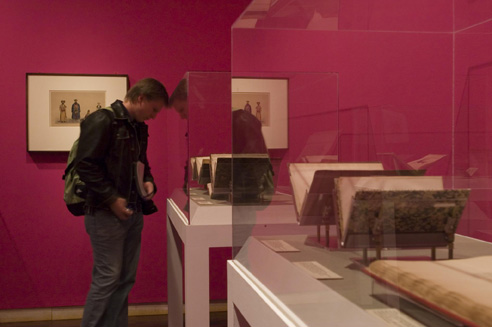Reproducing Nations: Types and Costumes in Asia and Latin America, ca. 1800-1860
On view:
through
Reproducing Nations: Types and Costumes in Asia and Latin America, ca. 1800-1860
In 2006, Americas Society presented Reproducing Nations: Types and Costumes in Asia and Latin America, ca.1800-1860, an innovative exhibition curated by Natalia Majluf that explored the descriptive tradition of costumbrismo as it developed in South America in the first half of the nineteenth century. The exhibition had curatorial premise focused on the cultural responses opened up by trade and commerce in the nineteenth century.

A term used in Latin America and Spain to designate a broad cultural phenomenon that emerged in the late-eighteenth century, costumbrismo referred to representations of local customs, dresses, and scenes of everyday life in visual arts and later on in literature. By focusing on the international format of a sub-genre within the costumbrista tradition rather than on the subjects depicted, the exhibition examined the importance of these popular images in the construction of both local and international identities of rising Latin American nations.
Reproducing Nations: Types and Costumes in Asia and Latin America, ca. 1800-1860 included an international selection of exquisite costume books, prints, and watercolors of types and costumes not only from South America, but from Asia and Europe as well. Particular attention was paid to the continuous dialogue between artists from Peru and China. As guest curator Natalia Majluf explained: “This exhibition presupposed an international market for visual images, one that grew dramatically as Latin America opened up to the world after the virtual isolation imposed by the Spanish crown’s restrictive policies. This period saw an enormous flow of foreign merchants, sailors, professionals, and artisans to the region.” By looking at costumbrismo from the global perspective of international exchange, in particular its forms of production and the circulation of products in Asia and Latin America, the exhibition reflected on this genre’s role in defining both national and international collective imaginaries of Latin America. According to Dr. Majluf, “The Enlightenment privileged both visual description and typological taxonomies—two elements that were fundamental in defining costumbrismo, a genre that brought visual description to a broader public through the popular press.”
The catalogue for this exhibition is out of print.
Reproducing Nations: Types and Costumes in Asia and Latin America, ca. 1800-1860 and other related events were made possible thanks to the generous support of HSBC bank and public funds from the New York State Council on the Arts, a government agency.
Installation view Reproducing Nations: Types and Costumes in Asia and Latin America, ca. 1800-186. Americas Society Art Gallery, 2006. Photograph Arturo Sanchez.






